Keep it simple: designing a user-centred digital information system to support chronic disease management in low/middle-income countries
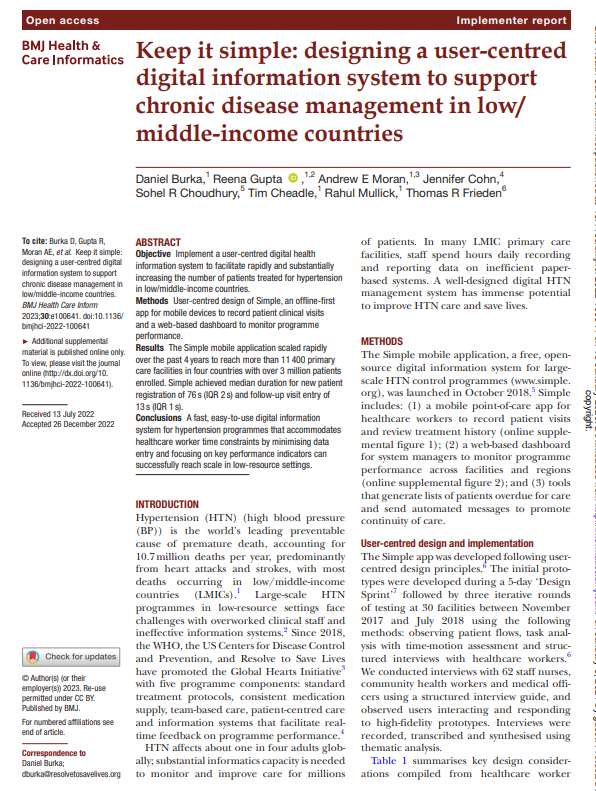
Implementer report on the Simple mobile app from BMJ Health & Care Informatics
The world must prepare now for the next pandemic
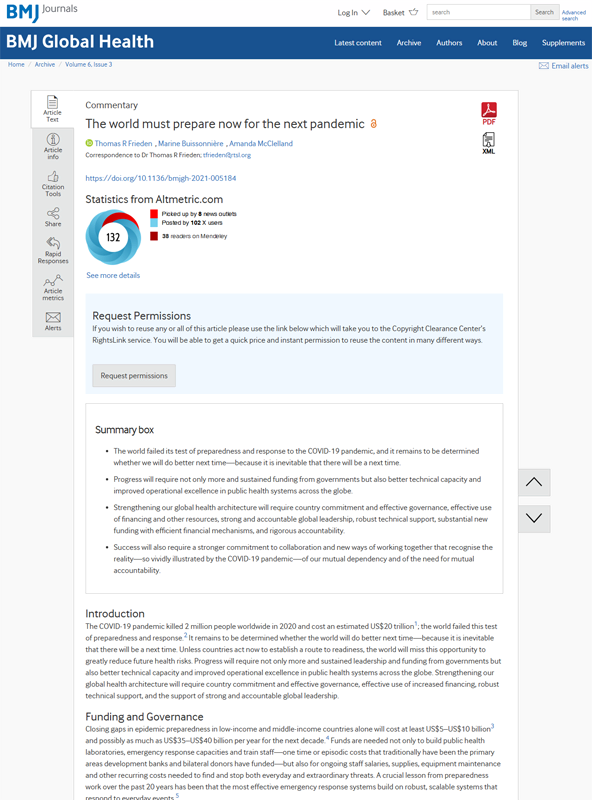
In a commentary for BMJ Global Health, Resolve to Save Lives takes lessons from the COVID-19 pandemic and proposes an updated understanding of pandemic preparedness. Moving forward, we must secure increased and sustained funding from governments, while enhancing technical capacities and operational excellence in public health systems worldwide. Strengthening our global health architecture demands a […]
WHO South-East Asia Region Sodium Benchmarks for Packaged Foods

A document that tailors the 2021 global sodium benchmarks for packaged food categories to the South-East Asia Region, incorporating regional food sources and sodium levels to support countries in setting feasible reformulation targets and advancing sodium reduction efforts.
Our formula for effective hypertension care

There are five crucial components of hypertension care at public health scale: simple treatment protocols; access to quality, affordable medications, team-based care and task sharing; patient-centered care; and strong information systems.
The road to achieving epidemic-ready primary health care
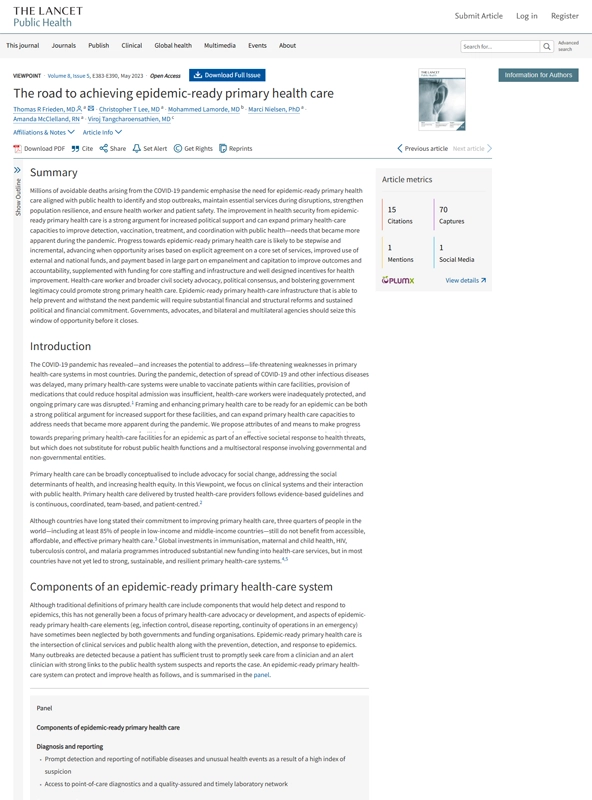
A new model for integrating public health and health care delivery— epidemic-ready primary health care—that can identify and stop outbreaks, maintain essential services during disruptions, strengthen population resilience, and ensure health worker and patient safety. For the Lancet Global Health, we argue that strengthening primary health-care capacities for detection, vaccination, treatment, and coordination with public […]
Selling a sick future: countering harmful marketing to children and young people across risk factors for NCDs
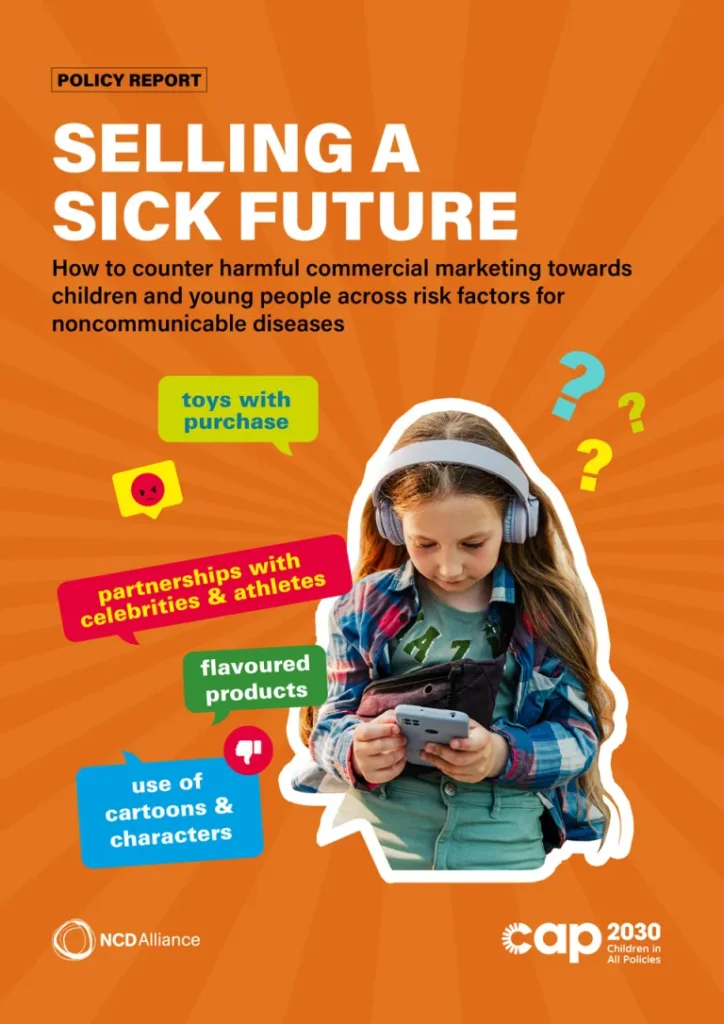
A guide on how to counter harmful commercial marketing towards children and young people across risk factors for noncommunicable diseases.
The Centrality of Communities and Civil Society in Epidemic and Pandemic Prevention. A Framework for Improved Preparedness and Response
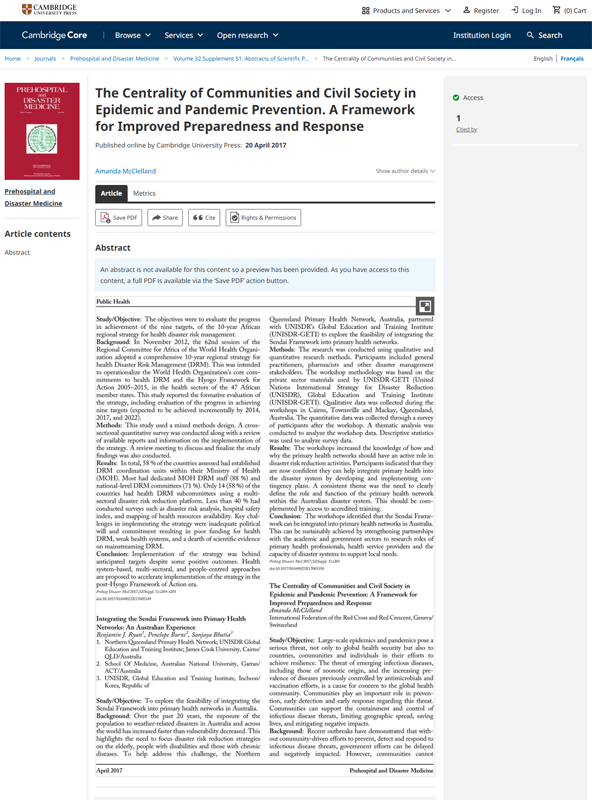
Large-scale epidemics and pandemics threaten global health security and community resilience, especially concerning emerging infectious diseases and the resurgence of previously controlled conditions. Communities play a vital role in preventing, detecting, and responding to these threats, as demonstrated in recent outbreaks. Effective community involvement enhances government efforts and mitigates negative impacts. This study emphasizes the […]
Singapore Case Study: Reducing Singaporeans’ High Sodium Intake

A case study on Singapore’s national strategy to reduce sodium intake through the promotion of lower-sodium alternatives
Policy Inventory for Effective Trans Fat Regulations
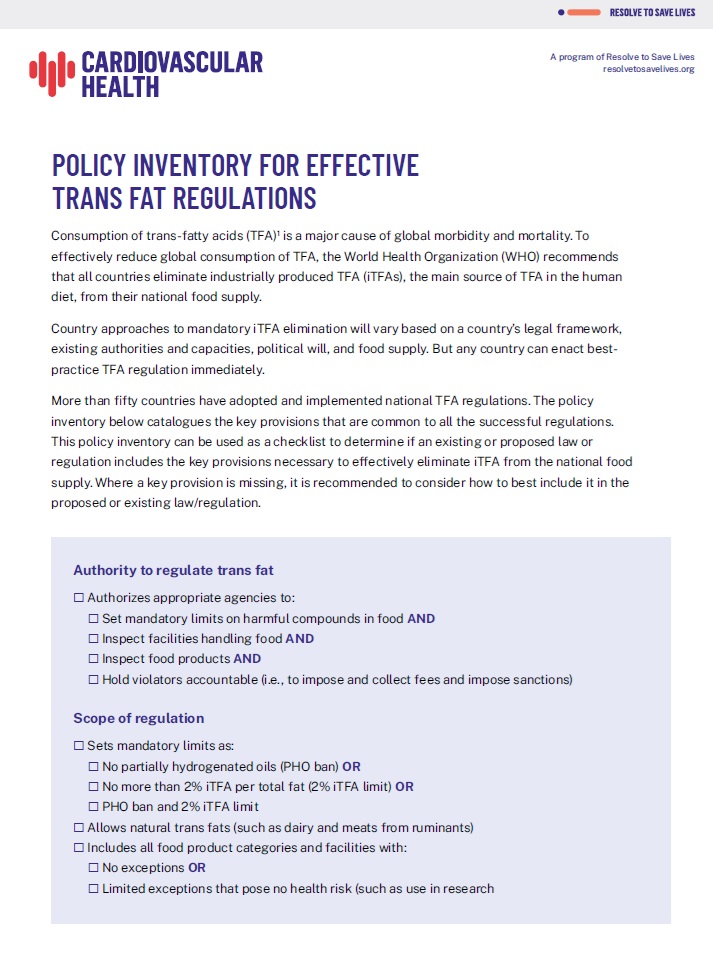
Checklist to determine if an existing or proposed regulation includes the key provisions necessary to effectively eliminate trans fat
Countdown to 2023: WHO report on global trans fat elimination 2022
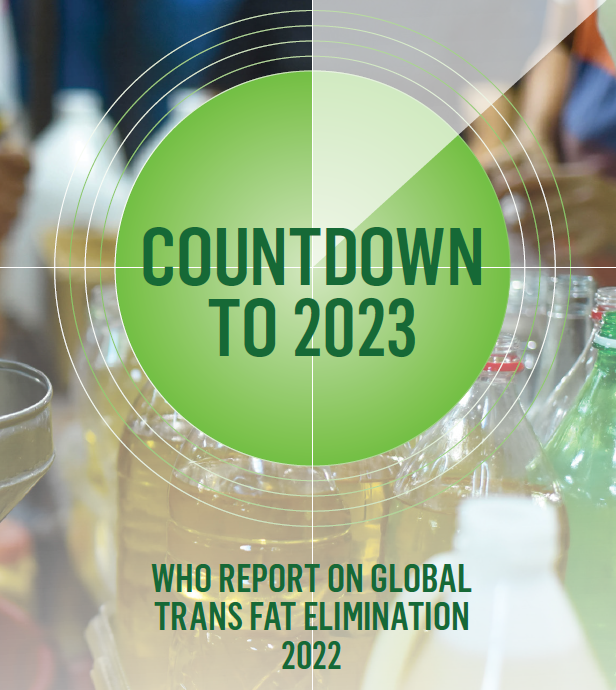
Annual REPLACE progress report – 2022
Countdown to 2023: WHO report on global trans fat elimination 2021
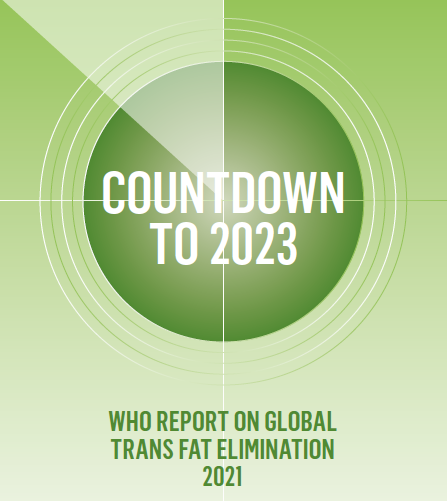
Annual REPLACE progress report 2021
Countdown to 2023: WHO report on global trans fat elimination 2020
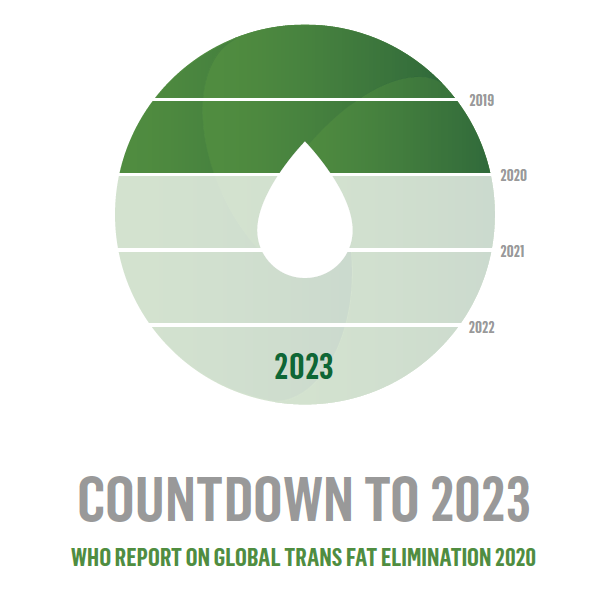
Annual REPLACE progress report 2020
Simplified protocol for measuring trans-fatty acids content as a percentage of total fatty acids in food products
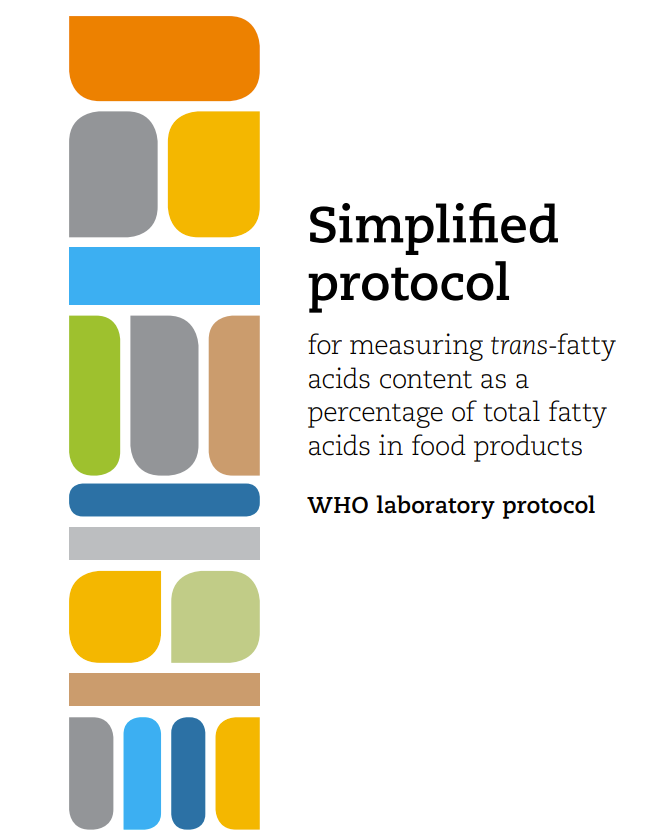
In response to global needs, the World Health Organization (WHO) developed a simplified protocol to assess and monitor trans fat content in foods to support efforts to eliminate trans fats from the global food supply. Accurate measurement of trans fat content is crucial for countries to implement and enforce regulations aimed at reducing trans fat […]
The amended international health regulations: Implications and challenges for domestic legal frameworks
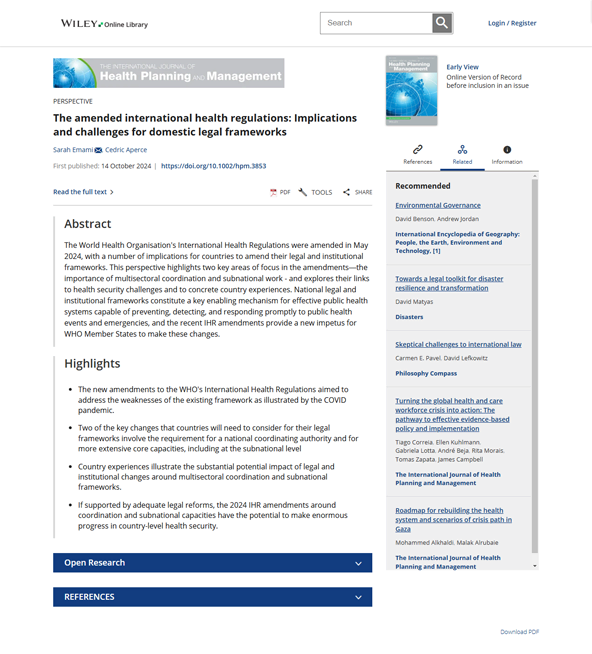
In The International Journal of Health Planning and Management, Resolve to Save Lives argues that the amendments to World Health Organization’s International Health Regulations (WHO IHR)—especially the emphasis on multisectoral coordination and strengthening subnational capacities— offer an important opportunity for countries to bolster their public health systems. As demonstrated by the COVID-19 pandemic, it is […]
The true cost of failing to protect health care workers

A landmark study from the World Bank and Resolve to Save Lives used a “cost-of-illness” methodology to measure the broader socio-economic costs of health care worker infections and deaths from COVID-19—including the costs of disruption to essential health services due to a compromised health workforce.
Behind the Labels: Big Food’s War on Healthy Food Policies
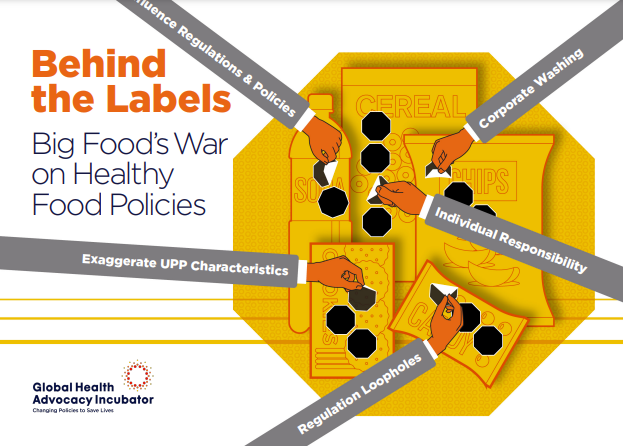
This report by GHAI’s Food Policy program reveals how the ultra-processed food industry has aggressively fought against front-of-package labels globally.
Policies to protect children from the harmful impact of food marketing: WHO guideline

This guideline builds on the 2010 WHO Set of recommendations on the marketing of foods and non-alcoholic beverages to children, and takes into consideration more recent evidence specific to children and to the context of food marketing.
Healthy Public Food Procurement in Quezon City, Philippines
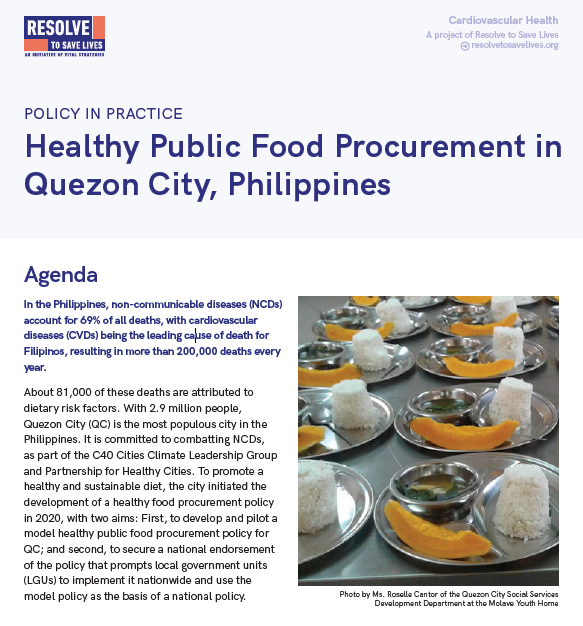
Case study on the development and implementation of a healthy public food procurement policy
Hypertension Treatment Protocol: Uganda
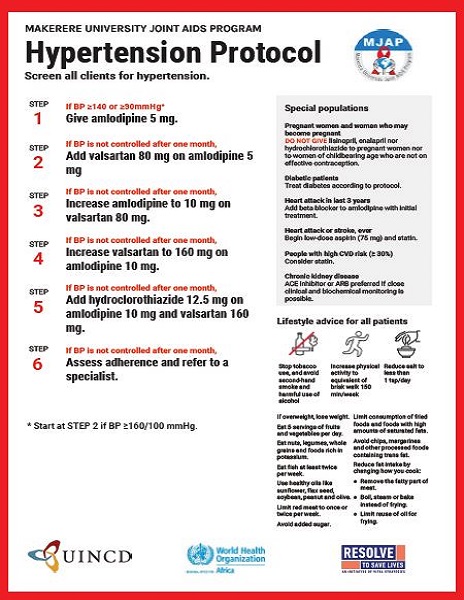
Treatment protocol developed by LINKS Grantee, Makarere University Joint AIDS Program
Review of Methods to Determine the Main Sources of Salt in the Diet
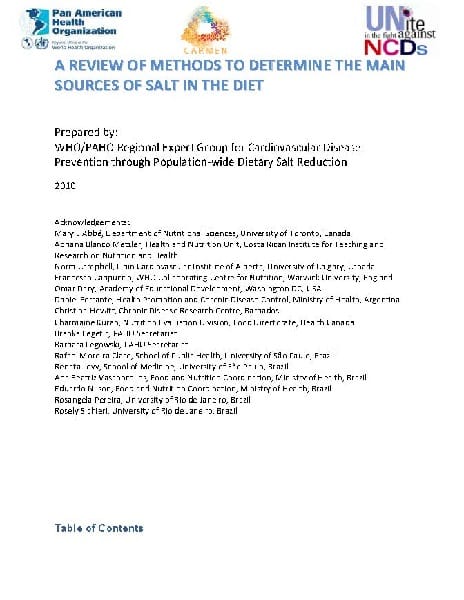
From WHO/PAHO Regional Expert Group for Cardiovascular Disease Prevention through Population-wide Dietary Salt Reduction
Sodium Reduction Framework
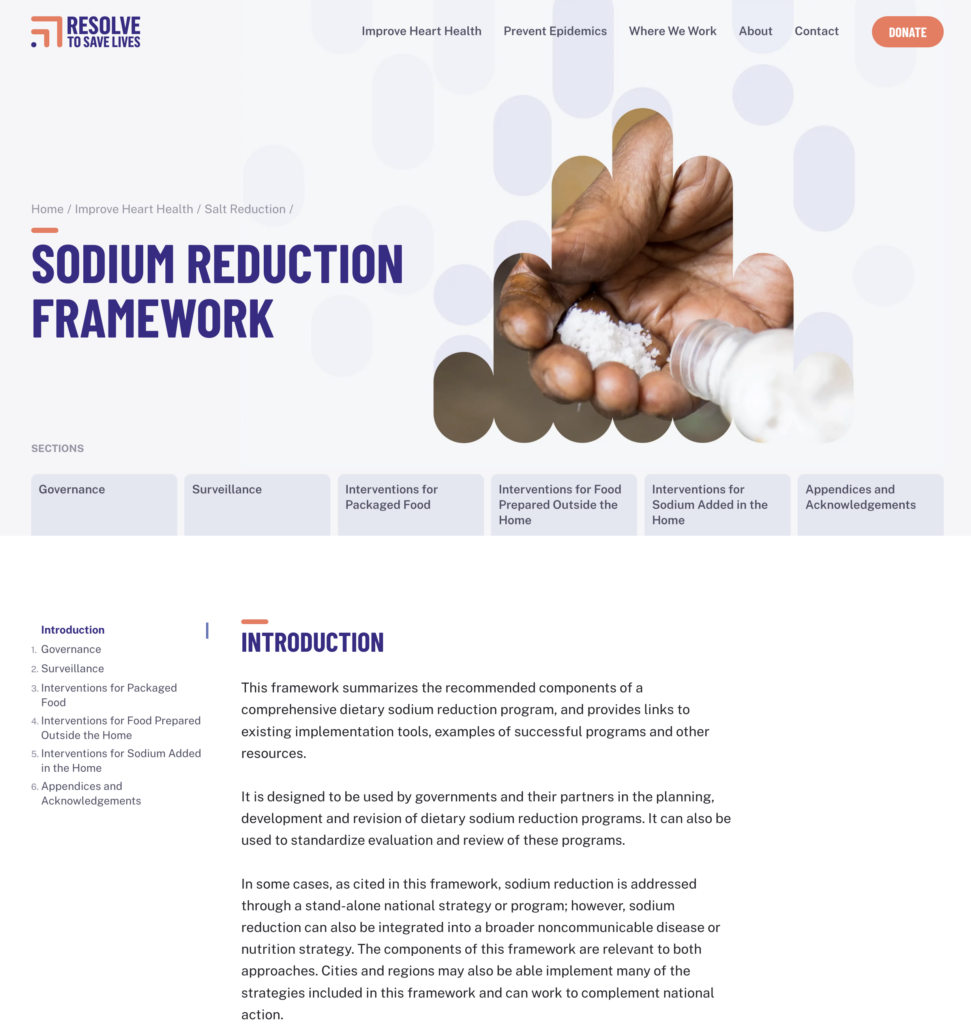
This framework summarizes the recommended components of a comprehensive dietary sodium reduction program, and provides links to existing implementation tools, examples of successful programs and other resources.
TB preventive therapy: uptake and time to initiation during implementation of ‘7-1-7’
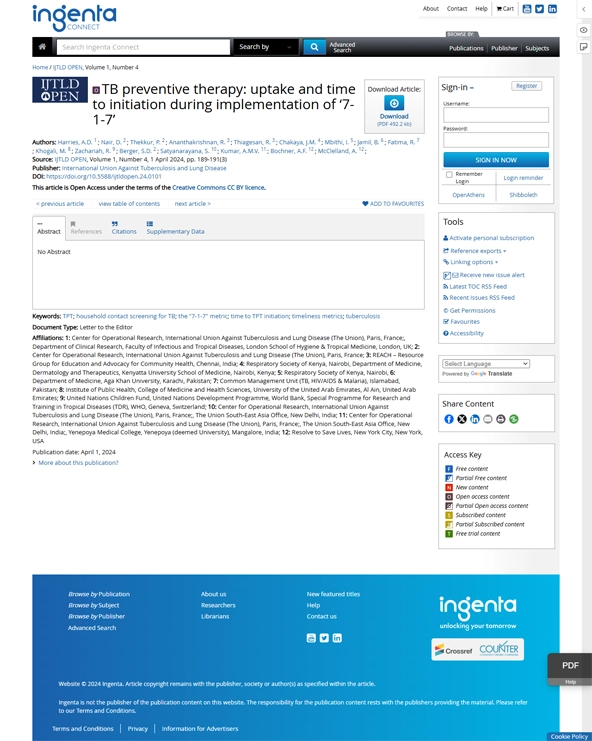
Can the 7-1-7 target increase the number of household contacts (HHCs) of tuberculosis patients initiated on preventive therapy? In this letter published in he International Journal of Tuberculosis and Lung Disease, our colleagues at International Union Against Tuberculosis and Lung Disease describe how the 7-1-7 metric was adapted for TB preventive therapy (TPT), requiring HHCs […]
Safer primary healthcare facilities are needed to protect healthcare workers and maintain essential services: lessons learned from a multicountry COVID-19 emergency response initiative

While an infection prevention and control initiative improved COVID-19 infection rates for health care workers in Africa, ongoing challenges demonstrated the need for long-term investments in sustainable IPC programs. In BMJ Global Health, Resolve to Save Lives examines an infection prevention and control (IPC) initiative implemented in 22 African countries from April 2020 to January […]
Reviewing Health Security Capacities in Nigeria Using the Updated WHO Joint External Evaluation and WHO Benchmarks Tool: Experience from a Country-Led Self-Assessment Exercise
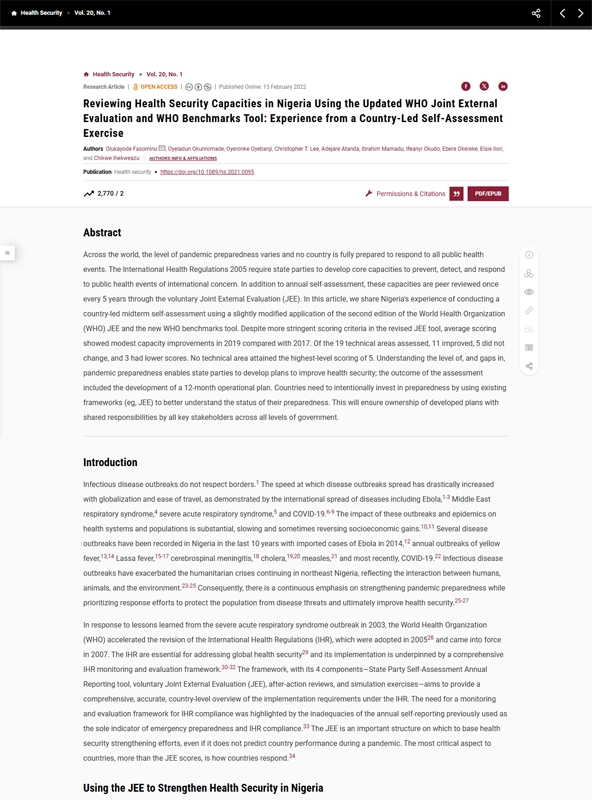
Nigeria’s experience with a self-assessment of pandemic preparedness underscored the need for investment and stakeholder involvement to strengthen health systems. Writing for Health Security, our colleagues at Nigeria Centres for Disease Control and Prevention reviewed Nigeria’s experience conducting a midterm self-assessment of its pandemic preparedness using a modified World Health Organization (WHO) Joint External Evaluation […]
Implementing and Enforcing Trans Fat Elimination Policy in Saudi Arabia

Summary of case study on the implementation and enforcement of Saudi Arabia’s trans fat elimination policy
Implementing and Enforcing Trans Fat Elimination Policy in Denmark
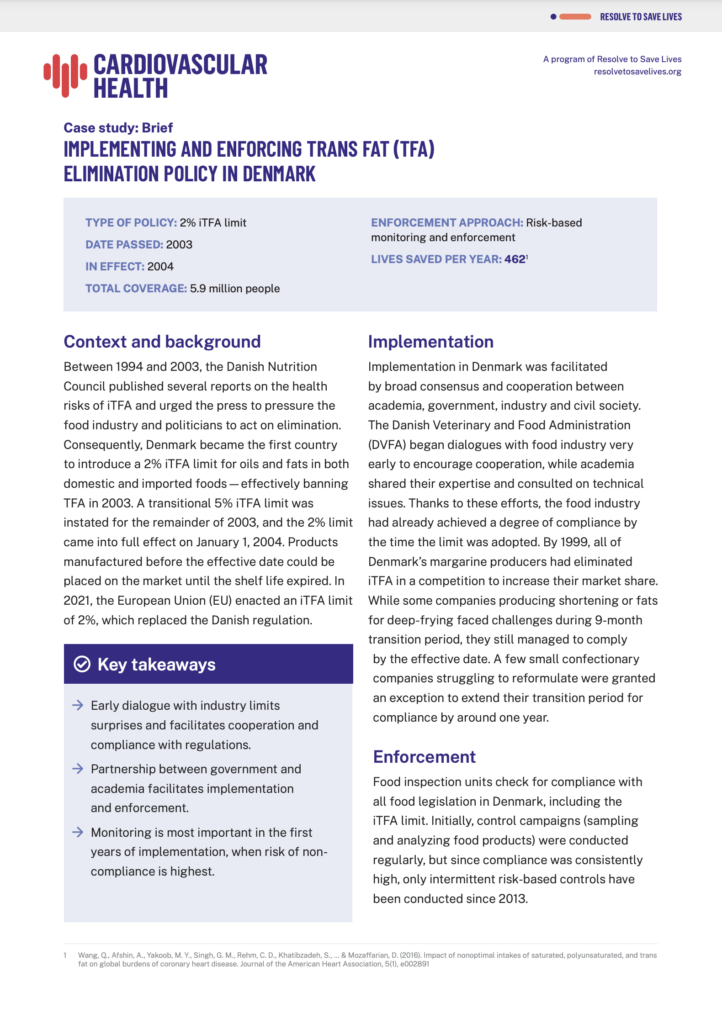
Summary of case study on the implementation and enforcement of Denmark’s trans fat elimination policy
Implementing and Enforcing Trans Fat Elimination Policy in the European Union
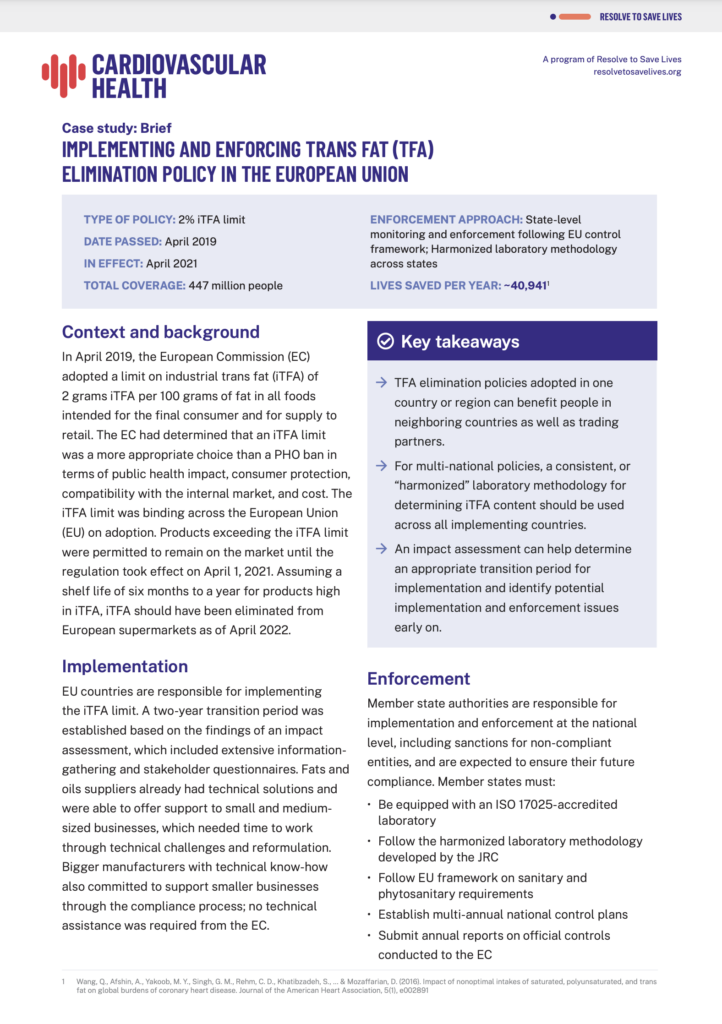
Summary of case study on the implementation and enforcement of the EU’s trans fat elimination policy
Implementing and Enforcing Trans Fat Elimination Policy in Thailand
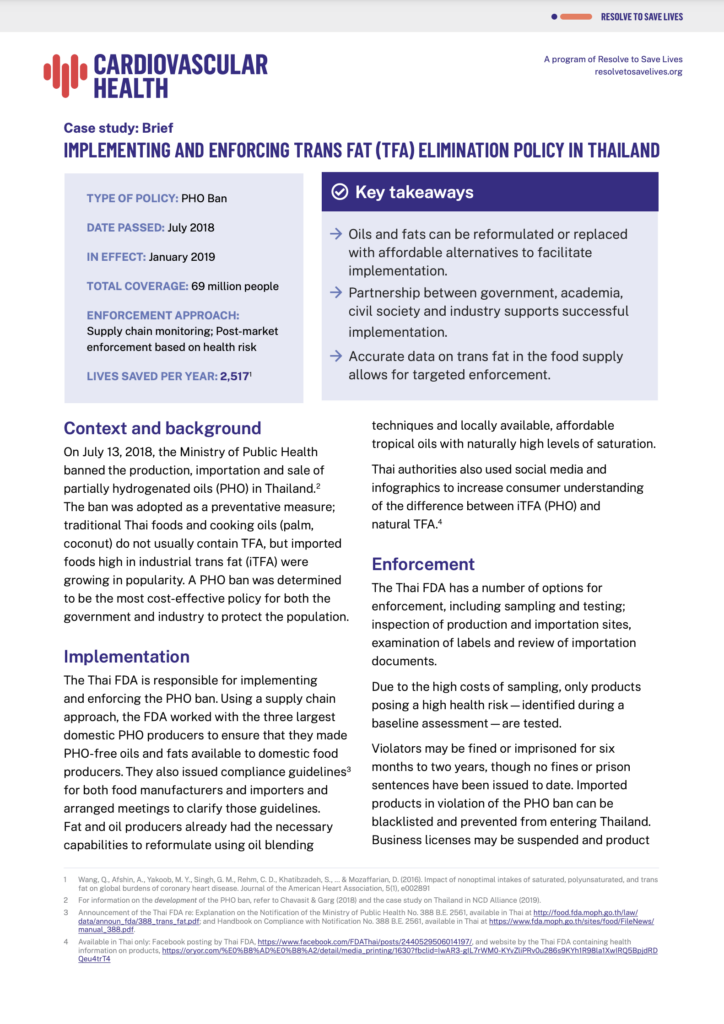
Summary of case study on the implementation and enforcement of Thailand’s trans fat elimination policy
Implementing and Enforcing Trans Fat Elimination Policy in Chile
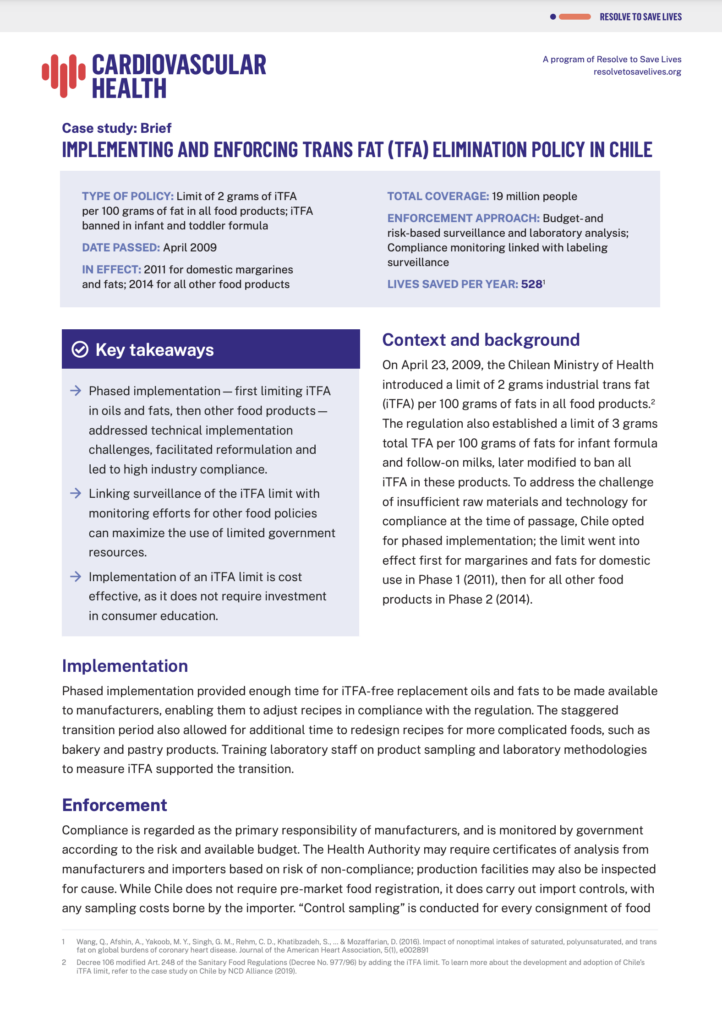
Summary of case study on the implementation and enforcement of Chile’s trans fat elimination policy
Implementing and Enforcing Trans Fat Elimination Policy in Singapore
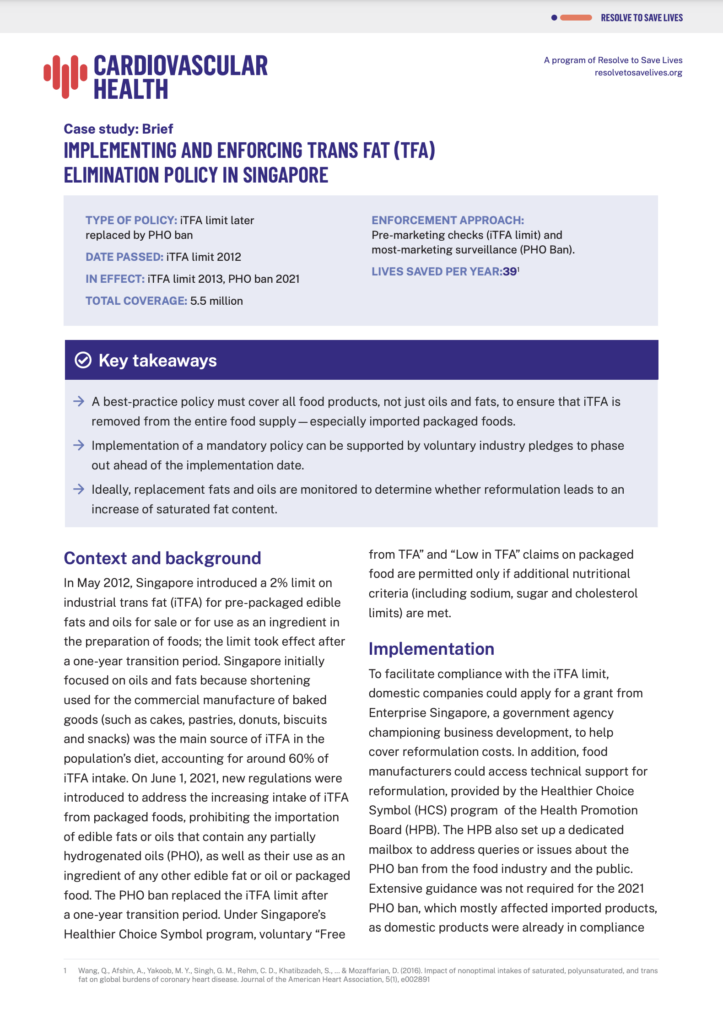
Summary of case study on the implementation and enforcement of Singapore’s trans fat elimination policy